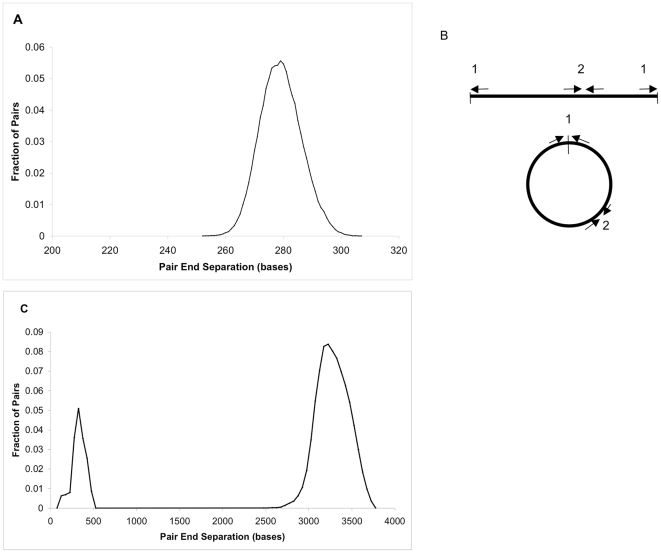Figure 1. Paired ends.
A. Fragment pair end separation distribution. Pairs are separated by 279±7 bp. B. Mate-pairs are produced by circularizing a genomic segment (vertical line indicates junction). End-sequences from sheared fragments that contain the junction (1) represent reads that point outward at the ends of the original segment. End-sequences from sheared fragments that do not contain the junction (2) are inwardly directed and adjacent on the original segment. C. Mate-pair end separation distribution. Two-thirds of all pairs are found to be divergently oriented and separated by 3.2±0.2 kb. An artifactual population of convergently oriented pairs separated by less than 500 bp is apparent, representing fragments of type (2) shown above in panel B.

